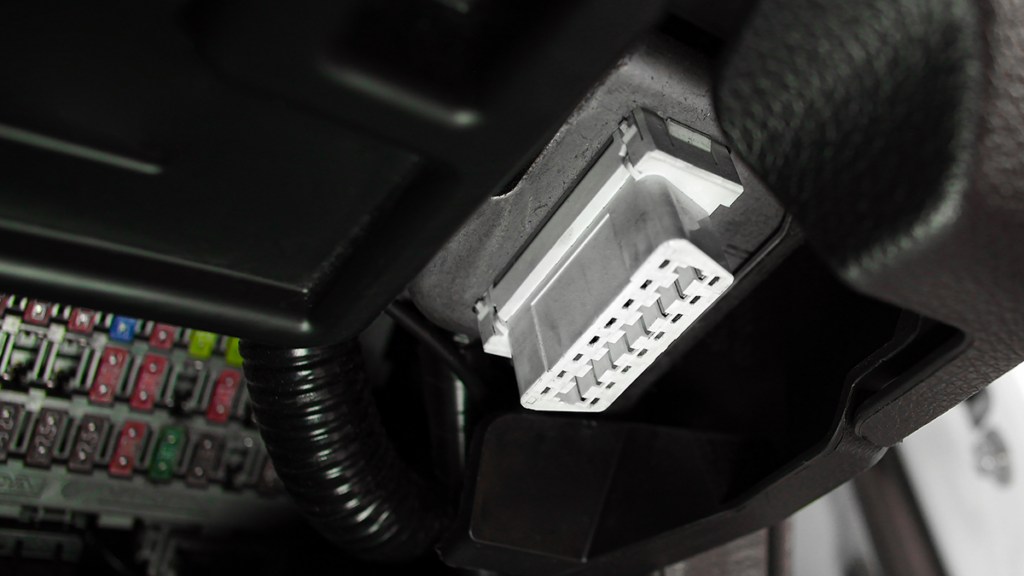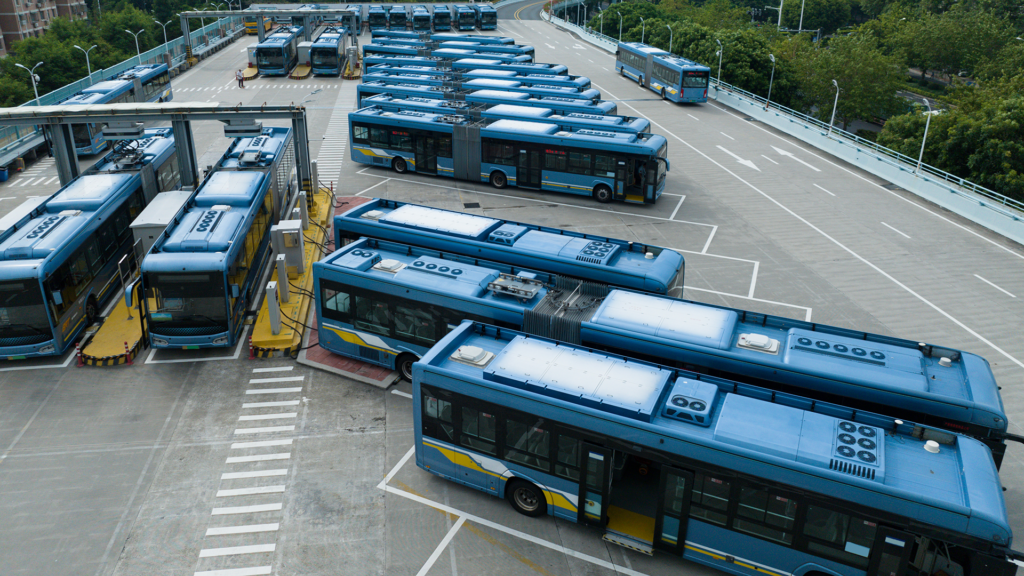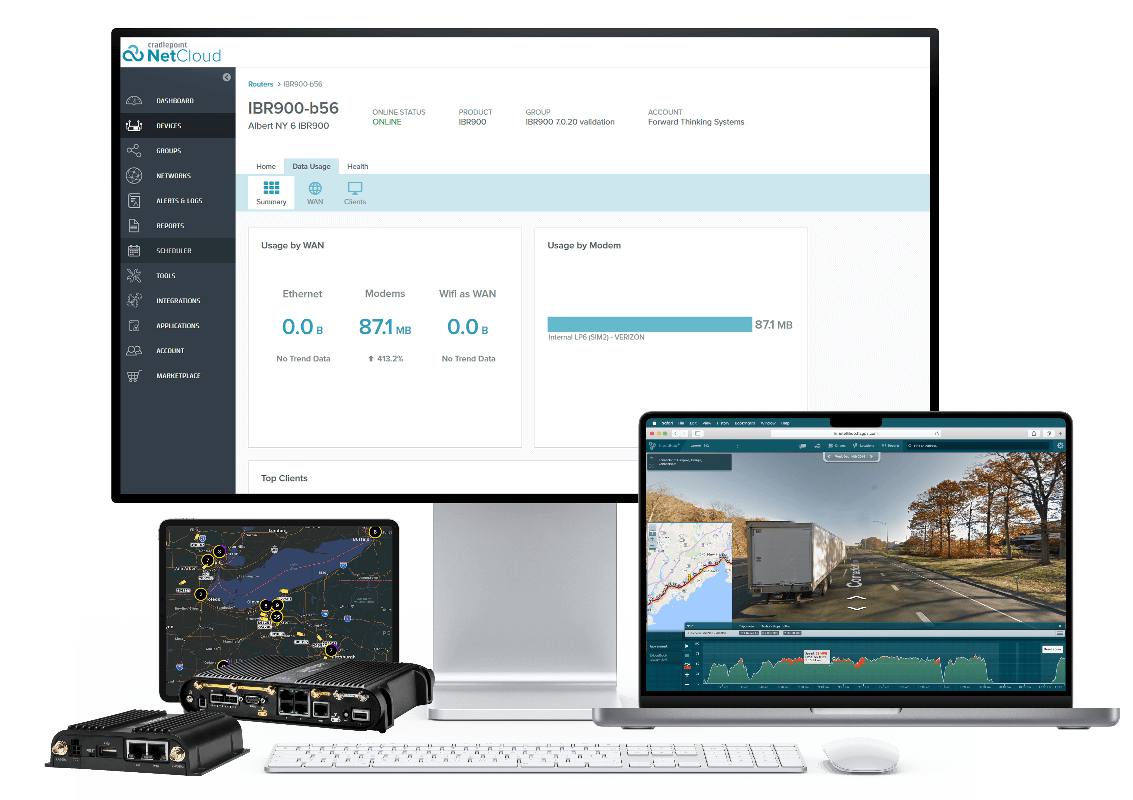Every year brings a fresh wave of fleet management trends, and 2023 was no different. This time around, the spotlight was on exciting developments in vehicle telematics and sustainable fleet management practices.
With supply chains still experiencing significant upheaval due to fluctuating delivery schedules, fleet managers turned to technology to better navigate uncertainties and disruptions. Advances in telematics and GPS tracking presented real-time visibility into logistics operations, empowering fleet managers to make informed decisions.
No doubt about it, fleet management went all in on high-tech. In 2023, fleet managers embraced artificial intelligence (AI) as a key tool to operate more safely and efficiently. A recent McKinsey report predicts that 70 percent of all companies will be using artificial intelligence by 2030, and that trend really starting ramping up in 2023.

One of the fastest emerging AI technologies in 2023 was the AI-enabled dash camera. Commercial dashcams equipped with AI championed safety by detecting risky driving behavior, tracking driver patterns, generating in-cab alerts, and initiating driver self-coaching through automated coaching tools such as DriveShield. By leveraging AI, advanced fleet dash cameras helped identify risky driving habits, enhance accountability, improve fleet visibility, and even reduce driver-related crashes.
For organizations looking to stay ahead of the competition, advanced AI camera technology such as FleetCam Pro answered the bell with an Advanced Driver Assistance System (ADAS) and Driver Monitoring System (DMS). These systems capture an extended list of road and driver behavior events, including following distance warning, forward collision warning, lane departure, pedestrian alerts, cell phone use, seatbelt use, smoking, and true fatigue detection. While traditional fatigue detection relies on hours of service to identify potential issues, FleetCam Pro uses eye-tracking technologies to monitor driver eye movements and gaze patterns, as well as facial recognition to identify head tilts, setting a new standard of precision.
Gone are the days of gut feeling management. Fleet managers stopped relying on intuition and embraced data visualization tools to make more informed decisions. And telematics data played a crucial role in making those data-driven decisions.

Telematics increasingly impacted how organizations operated and maintained their fleet vehicles in 2023. By pulling additional data streams from a vehicle’s Engine Control Unit through an OBD-II or JBUS port, fleet managers gathered engine diagnostic information and more precise vehicle data to drive real-time decisions. By capturing engine run time, accurate odometer mileage, and DTC codes and counts, fleet managers were better equipped to schedule preventative maintenance and keep their vehicles on the road.
Integrating advanced telematics systems also provided fleet managers with real-time insights into fleet performance. By gathering and analyzing RPMs, vehicle speed, and fuel levels, and correlate that information with accurate GPS data, fleet managers were able to better monitor idle time and improve fuel efficiency.
Fleet safety remained of paramount importance in 2023. According to J.J. Keller & Associates survey, a whopping 62% of fleet managers cited safe vehicle operation as their top priority. By analyzing trends in driver behavior, fleet managers were able to identify areas for improvement and implement targeted solutions to mitigate risk and create a safe driving environment. Finally, fleet managers and drivers alike could use telematics data to ensure drivers complied with hours-of-service regulations, helping companies avoid fines and maintain a safety-first culture.
With new government regulations and policymakers pushing the automotive sector to manufacture zero-emission vehicles by 2030, environmental consciousness was a driving factor towards greener fleets in 2023. Companies began embracing electric vehicles, alternative fuels, and fuel-efficient practices to reduce their carbon footprint and comply with stricter regulations. As a bonus, that focus on sustainability should make meeting California’s new Advanced Clean Fleets regulations much easier to meet in 2024.

Fleet managers found plenty of reasons to adopt eco-friendly practices, and route optimization seamlessly tied into that overall trend towards sustainability. By optimizing routes using tools such as Route Matrix, fleets were able to enhance fuel efficiency, reduce greenhouse gas emissions, and reduce long-term overhead.
To ensure successful implementation of advanced technologies, such as AI-driven dash cameras and mobile workforce management tools, companies invested in training programs for drivers and staff to fully understand and effectively utilize the new technologies. This fostered a culture of technological adoption and maximized the benefits of the investments.

Additionally, instead of treating technology as a one-time purchase, fleet managers forged partnerships with tech companies for ongoing support, customization, and integration of new features. This collaborative approach ensures the technology stayed relevant and adapted to changing needs.
FTS’ ongoing partnership with Cradlepoint, for example, highlights the types of benefits customers receive from such agreements. Not only do clients enjoy the best in-vehicle routers available on the market from Cradlepoint, but their partnership provides an Automatic Vehicle Location (AVL) solution that instantly adds comprehensive fleet tracking features (such as IntelliHub) to fleets with existing Cradlepoint hardware.
The emergence of 5G and Internet of Things (IoT) technologies presented exciting opportunities for fleet management. With 5G technology, high speeds and reduced latency meant live streaming or fetching historical video from dashcams such as the FleetCam Pro was faster than ever before. This greatly benefits fleet management tasks, where timely information is critical. In addition, the expanded bandwidth supports more connected devices, enabling fleet managers to capture significantly more data from their assets through IoT sensors.

Increased adoption of advanced IoT tracking sensors and inputs offered fleet managers all kinds of new data streams, including tracking temperature, compressor activity, power take-offs (PTOs), meters, lights, and sirens. With that extra layer of insight, fleet managers were able to make better, data-driven decisions about asset utilization, and this trend will only continue in 2024.
This past year, fleet management took a significant leap forward, shifting towards responsible and efficient operations. Technological advancements fueled these trends, and the journey continues into 2024. On a personal front, 2023 was an equally exciting year for Forward Thinking Systems.
In addition to significantly expanding our commercial client base across various industries, we also started providing telematics services to several major municipalities, including the County of Riverside California, Denver Regional Transportation District, Southeast Pennsylvania Transportation Authority, and the City of Cincinnati, among others. And on the technology front, we launched two game-changing products, as well as several new features to our existing core product line.

Our new products included the FleetCam Wireless Rugged Cam – a state-of-the-art rear-mount wireless camera system designed to improve trailer security and pedestrian safety – and the OmniPass multi-modal passenger scanner. Designed especially for school buses to improve student safety, the new OmniPass scanner provides accurate passenger counts and location details of students boarding and disembarking buses.
In addition to our new products, FTS also implemented several new features to existing products, including Over-the-Air Automatic Vehicle Profiling and Stream-by-Driver. The new vehicle profiles enable server-side setting of crucial vehicle parameters, including base weight, number of axles, maximum axle weight, body dimensions, and Hazmat requirements. These parameters can sync directly to the driver’s commercial turn-by-turn navigation to help keep drivers on appropriate roads.. Our new Stream by Driver feature in FleetCam allows fleet managers to select and aggregate video streams and driver events based on a specific driver, rather than through vehicle-specific streams. Looking ahead to 2024, advancements such as these will only be the beginning, and FTS hopes to remain at the forefront by helping fleet managers enhance operational excellence, reduce costs, and leave a positive environmental footprint. Expect to see even more ground-breaking innovations as the years moves along and we help transformation in this critical sector.
AI-enabled dash cameras, such as FleetCam Pro, improve fleet safety by detecting risky driving behavior, issuing in-cab alerts, and employing automated coaching tools. Using ADAS and DMS technology, these cameras detect events such as forward collision warning, lane departures, distracted driving, driver fatigue, and more.
Telematics systems enable data-driven decision-making by providing by capturing engine diagnostic information and precise vehicle data, such as accurate odometer mileage, RPMs, vehicle speed, fuel levels, and more from the Engine Control Unit. With this data, fleet managers can better monitor vehicle performance and analyze trends in driver behavior.
Route optimization tools, such as Route Matrix, improve fuel efficiency by minimizing unnecessary mileage and reducing fuel consumption. Efficiently planned routes can reduce operational costs and significantly decrease a fleet’s carbon footprint by lowering greenhouse gas emissions associated with fuel consumption.
Integrating 5G and IoT technologies provides faster data access and enables a broader range of asset monitoring. 5G technology enables faster live streaming and retrieval of historical videos from dashcams, while IoT sensors capture a diverse range of data streams from additional assets, including tracking temperature, compressor activity, lights, sirens, and more.
Recent Posts
Stay in Touch
Ready to make fleet management more manageable?
Schedule your demo today!